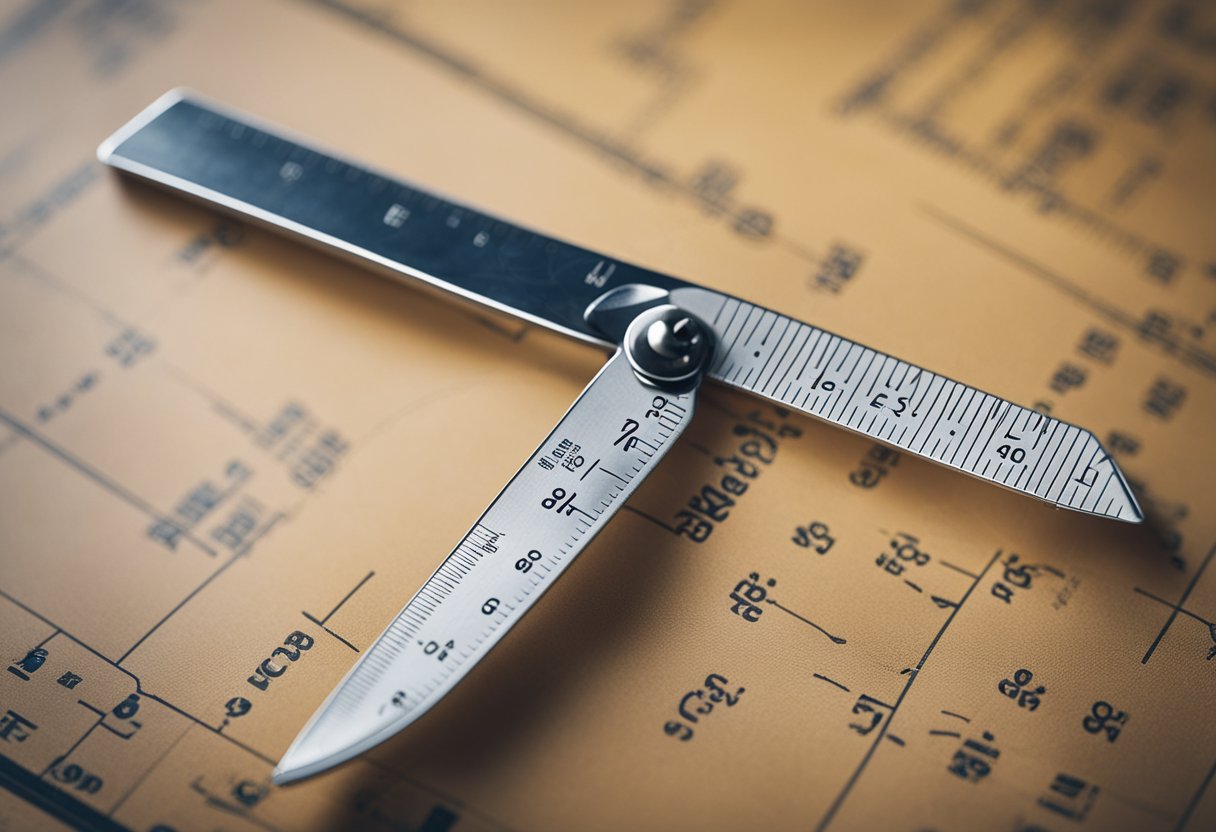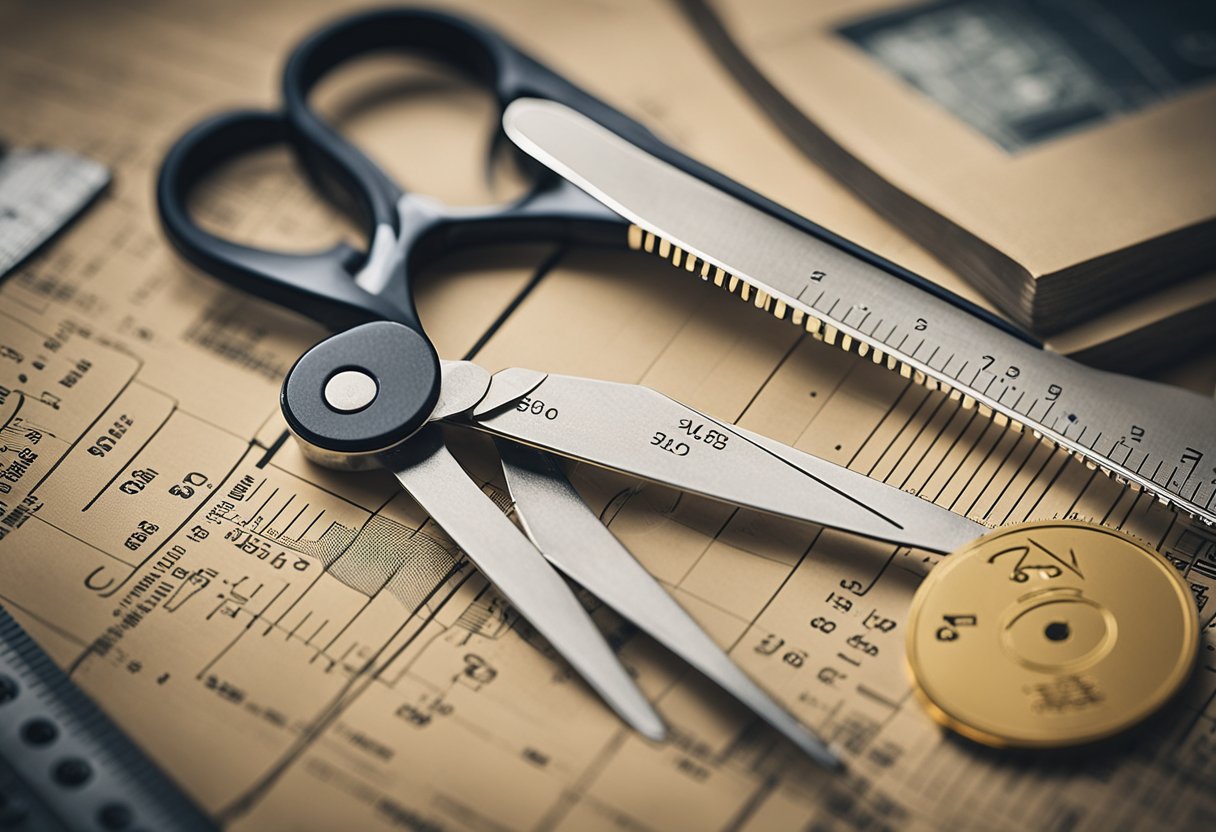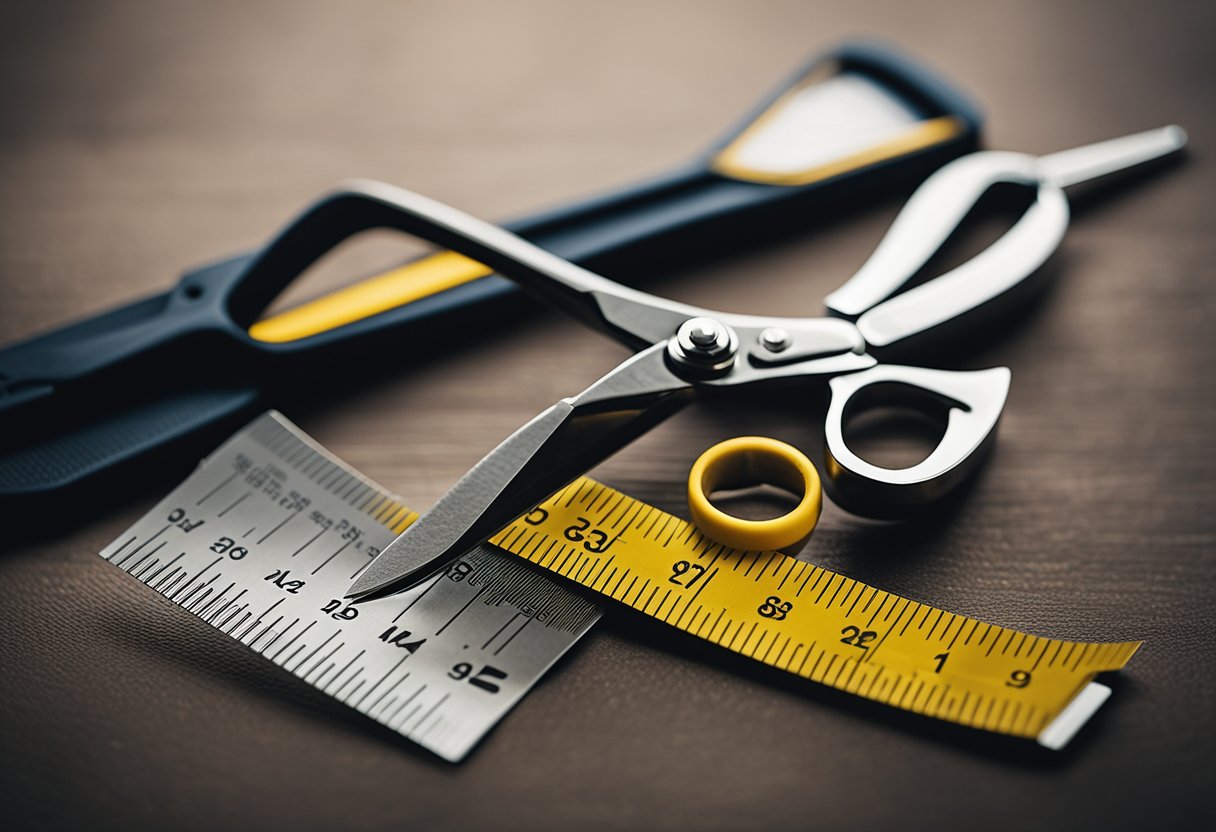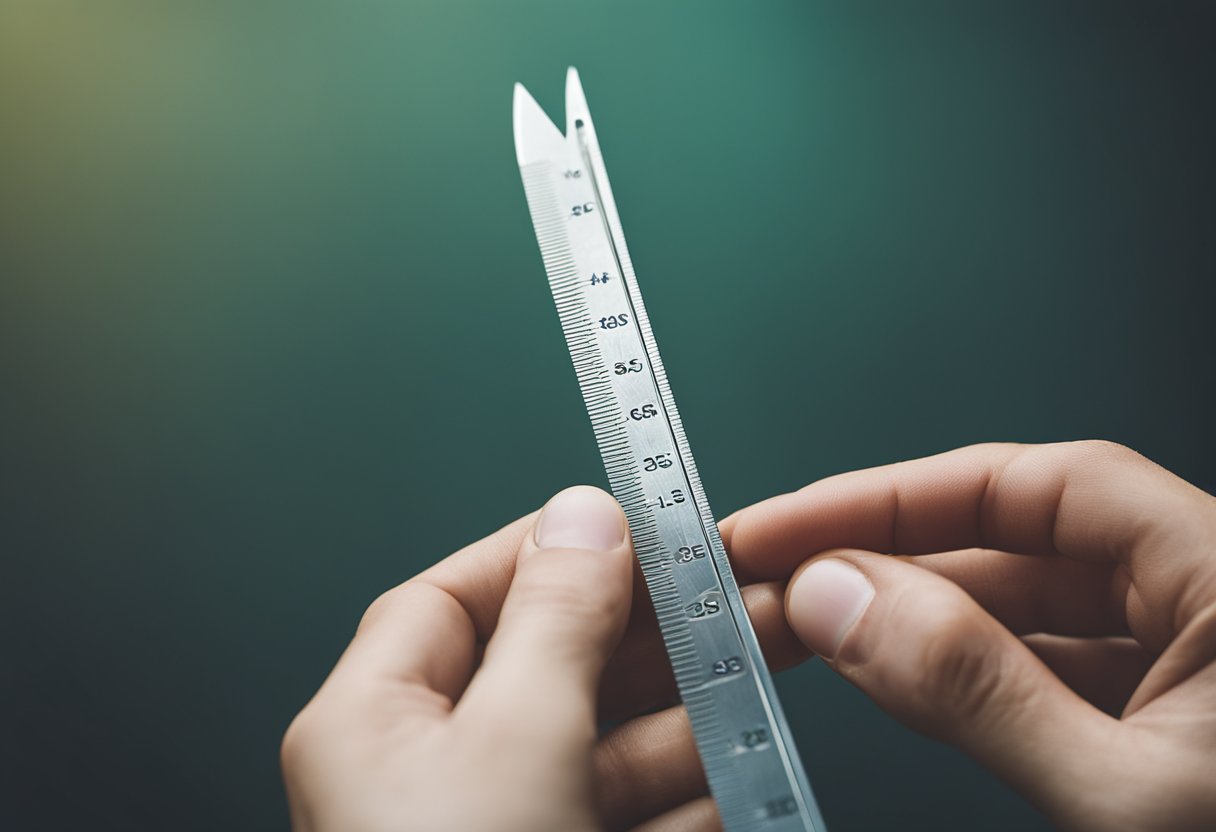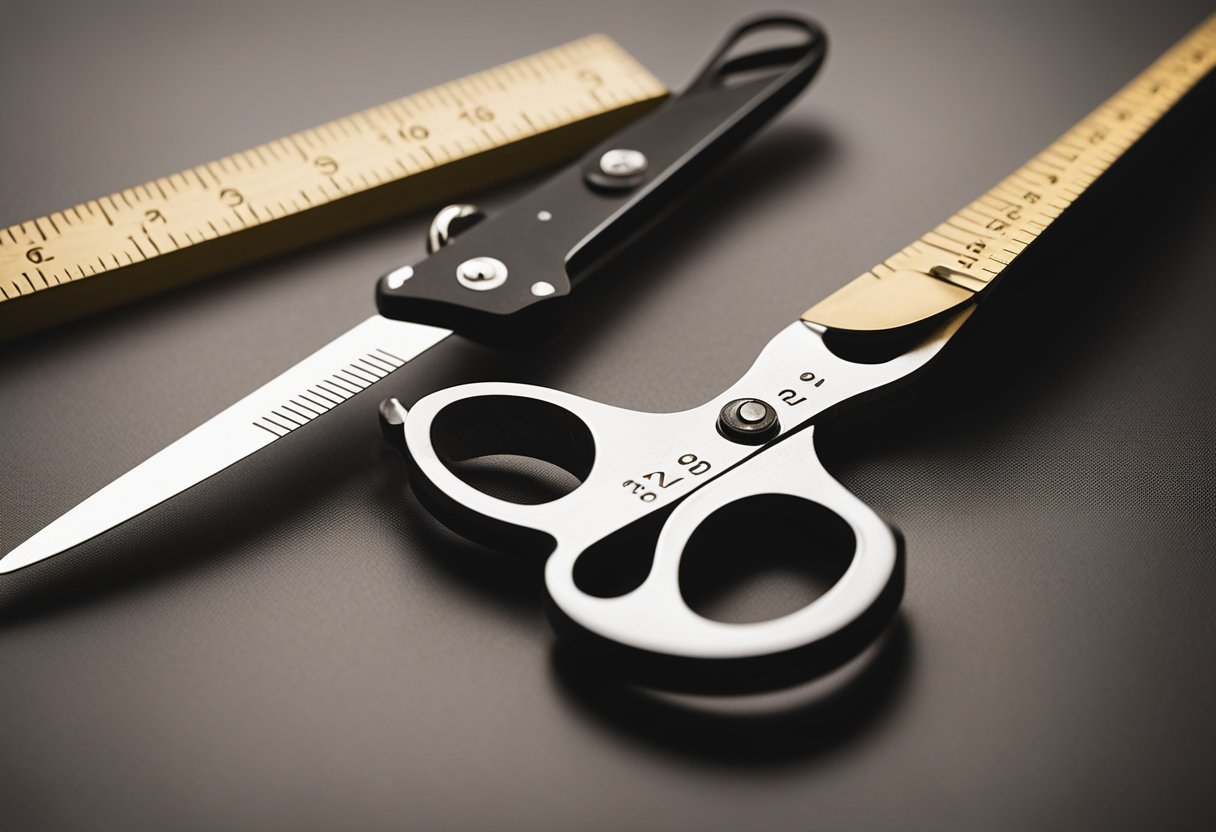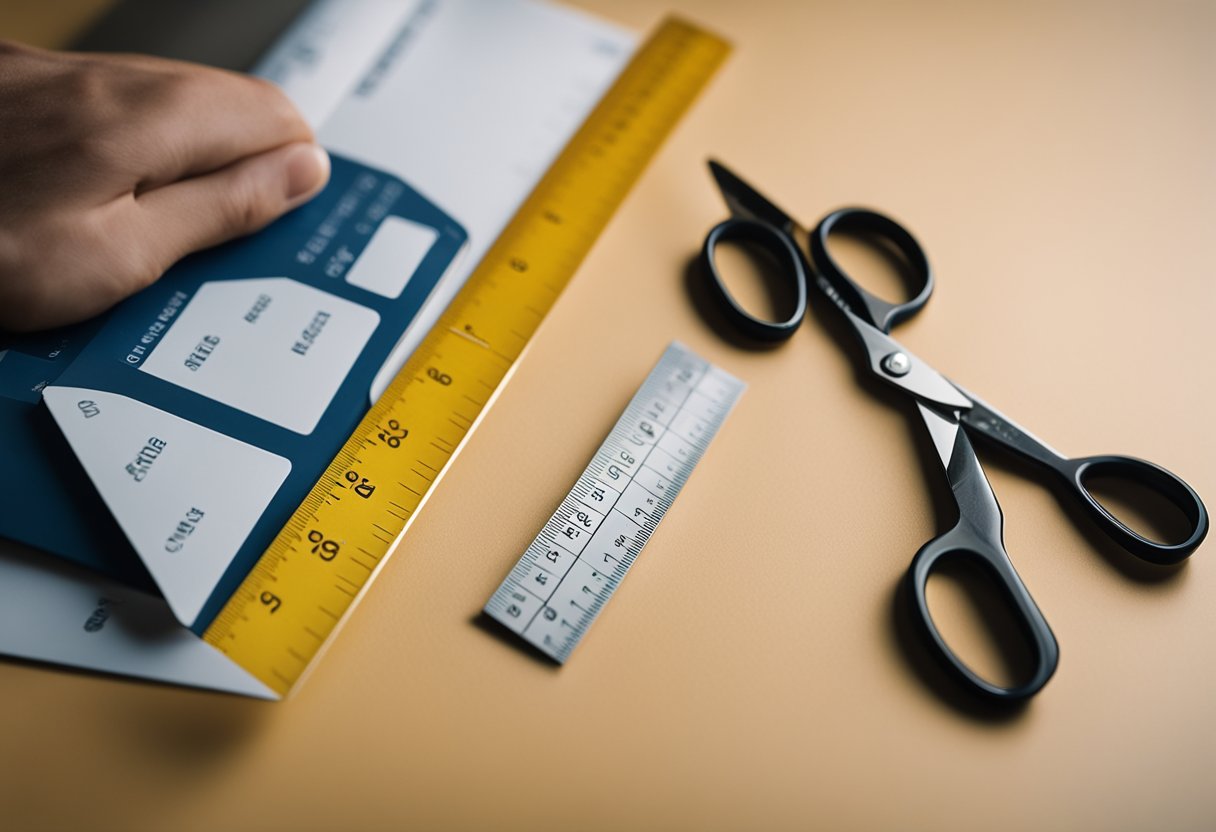As someone who uses scissors frequently, it’s important to know how to measure them to ensure that you’re getting the right size for your needs. Measuring scissors may seem like a simple task, but there are a few important factors to consider that can affect the accuracy of your measurements. In this article, I will guide you through the process of measuring scissors and provide you with tips on how to choose the right size and maintain your scissors.
Understanding scissors is the first step to measuring them correctly. Scissors are composed of two blades that are joined together by a pivot point. The blades can vary in size, shape, and material, depending on the intended purpose of the scissors. Scissors can be used for a variety of tasks, from cutting paper and fabric to trimming hair and pruning plants. Each task requires a specific type of scissors with a specific blade size and shape.
Key Takeaways
- Measuring scissors correctly is important to ensure that you get the right size for your needs.
- Scissors are composed of two blades that can vary in size, shape, and material, depending on the intended purpose of the scissors.
- To measure scissors, you need to measure the blade, handle, and overall length, and choose the right size for your needs.
Understanding Scissors
https://www.youtube.com/watch?v=ROwXrrxucuo&embed=true
As a stylist, I know that choosing the right pair of scissors is critical for achieving the perfect cut. Understanding the anatomy of scissors is the first step in selecting the right pair for the job.
Scissors consist of two blades that are joined together by a pivot point. The length of the blades is an important factor when selecting a pair of scissors. To measure the blade length of your scissors, place the tape measure at the base of one of the blades (where it meets the handle) and stretch it all the way to the tip of the other blade. Make sure the tape measure is straight and not bent at any point. Write down the measurement in centimeters or inches. [1]
There are different types of scissors available, each designed for specific tasks. For example, straight scissors are ideal for basic haircuts, while thinning scissors are used for texturizing and blending. [2]
The handle of the scissors is another important factor to consider. The handle should fit comfortably in your hand and provide a firm grip. Some scissors have finger holes, while others have a finger rest or tang. The finger holes are the circular openings in the handles where you place your fingers. The finger rest or tang is the part of the handle that extends out from the blade and provides support for your fingers. [3]
Scissors can also be designed for left-handed or right-handed users. It is important to choose scissors that are designed for your dominant hand to ensure maximum comfort and control. [2]
Finally, the material of the blades can also affect their performance. Titanium blades are durable and long-lasting, while metal blades are more affordable. [4]
By understanding the different components of scissors and their functions, you can make an informed decision when selecting the right pair for your needs.
References
- How To Measure Scissors: The Ultimate Guide for Accurate Cutting
- How to Measure Scissors – Scissor Tech USA
- How To Measure Scissor Length | Stay Sharp Shears
- How to Measure Scissors – A Comprehensive Guide – Hattori Hanzo Shears
Why Measure Scissors
As a professional dressmaker, I know the importance of measuring scissors before starting any project. Measuring scissors is a crucial step that ensures the perfect cut and fit of the fabric. It is not only limited to dressmaking but also to other crafts such as quilting, embroidery, and more.
Measuring scissors is also essential for barbers and hairdressers. The length of the blade and handle plays a crucial role in achieving the desired haircut. It ensures that the hair is cut evenly and accurately, giving a polished look to the client.
Different types of scissors are used for various purposes, and measuring them is necessary to get the right tool for the job. For instance, if you are working on a project that requires small and precise cuts, you need to measure scissors with shorter blades. Similarly, if you are working on a large project, you need scissors with longer blades for more extended cuts.
Measuring scissors is also crucial for maintaining their sharpness. If you are using scissors that are too small or too big for your hands, it can cause strain and discomfort, leading to dullness of the blades. Measuring scissors ensures that you get the right size that suits your hands and prevents unnecessary strain.
In summary, measuring scissors is essential for achieving accurate and precise cuts in any project, whether it is dressmaking, crafts, or hairdressing. It also ensures that you get the right size for your hands, preventing discomfort and maintaining the sharpness of the blades.
Tools for Measuring Scissors
https://www.youtube.com/watch?v=Be9Yg0f2k9c&embed=true
When measuring scissors, it is important to have the right tools to ensure accurate measurements. The most common tools used for measuring scissors are a ruler or tape measure and calipers.
A ruler or tape measure is a simple and easy-to-use tool for measuring scissors. To use a ruler or tape measure, place one end at the base of the blade where it meets the handle and stretch it all the way to the tip of the other blade. Make sure the ruler or tape measure is straight and not bent at any point. Record the measurement in either centimeters or inches.
Calipers are another tool that can be used to measure scissors. Calipers are more precise than a ruler or tape measure and are commonly used in industrial settings. To use calipers, place one end of the caliper at the base of the blade where it meets the handle and extend the other end to the tip of the other blade. Record the measurement displayed on the caliper.
When choosing between a ruler or tape measure and calipers, consider the level of precision required for the task at hand. A ruler or tape measure is suitable for most applications, while calipers are best used when high precision is required.
In conclusion, having the right tools is essential when measuring scissors. A ruler or tape measure is a simple and easy-to-use tool, while calipers offer a higher level of precision. Choose the tool that best fits your needs to ensure accurate measurements.
Measuring the Blade
https://www.youtube.com/watch?v=YP8dz3G60uY&embed=true
As a professional stylist, I know that measuring the blade of your scissors is an essential step in choosing the right pair for your needs. The blade length determines how much hair you can cut at once and affects the precision of your cuts. Here’s how to measure the blade of your scissors correctly:
-
Find a straight edge: To measure the blade length, you need a straight edge. A ruler or a tape measure works well. Make sure it’s long enough to measure the entire blade.
-
Place the scissors on the straight edge: Place the scissors on the straight edge with the blade facing up. Make sure the blade is straight and not bent at any point.
-
Measure the blade length: To measure the blade length, place the tape measure at the base of one of the blades (where it meets the handle) and stretch it all the way to the tip of the other blade. Make sure the tape measure is straight and not bent at any point. Write down the measurement in centimeters or inches.
It’s important to note that blade length can vary depending on the type of scissors you have. Straight blades are easier to measure than curved blades, which can be more challenging due to their shape. Additionally, serrated blades can be trickier to measure, so it’s important to take extra care when measuring them.
Lastly, keep in mind that the sharpness of your scissors can also affect the blade length. Dull scissors may have a shorter blade length due to wear and tear, so it’s essential to regularly sharpen your scissors with a sharpening stone or take them to a professional sharpener.
By following these steps, you can accurately measure the blade length of your scissors and choose the right pair for your needs.
Measuring the Handle
https://www.youtube.com/watch?v=KBZ14eQavhg&embed=true
When measuring the handle of a pair of scissors, it is important to take a few factors into consideration. The handle is the part of the scissors that you grip onto when using them. The handle length can vary greatly depending on the type of scissors you are measuring. To accurately measure the handle length, start at the point where the blade meets the handle and measure straight to the end of the handle. Make sure to include any extended finger loops or grip areas in your measurement.
It is important to note that some scissors have different types of handles such as crane handles, which can affect the overall length of the blade. When measuring the handle of scissors with crane handles, it is still important to measure from the point where the blade meets the handle to the end of the handle, including any extended finger loops or grip areas.
When measuring the handle length of scissors with finger holes, it is important to measure the diameter of the circle formed by the finger hole using a vernier caliper. This will give you an accurate measurement of the size of the finger hole and help ensure a comfortable fit for your fingers when using the scissors.
Overall, measuring the handle of scissors is an important step in ensuring that you have the right size and fit for your needs. By taking the time to measure the handle length and finger holes, you can ensure that your scissors are comfortable to use and provide accurate cutting results.
Assessing the Overall Length
https://www.youtube.com/watch?v=6SALE-_KiU4&embed=true
When it comes to measuring scissors, it’s important to consider the overall length of the scissors. The overall length of scissors is the distance between the tip of the blade and the end of the handle. It’s an important factor to consider when choosing scissors for a specific task.
To measure the overall length of scissors, I recommend using a ruler or tape measure. Simply place the ruler or tape measure at the base of one of the blades and stretch it all the way to the end of the handle. Make sure the tape measure is straight and not bent at any point. Write down the measurement in centimeters or inches.
It’s important to note that the overall length of scissors can vary depending on the type of scissors. For example, scissors with crane handles will often have a proportionally shorter blade length compared to the overall length. This is because the crane handle allows for a more ergonomic grip, which can be beneficial when using scissors for extended periods of time.
When choosing scissors for a specific task, it’s important to consider both the blade length and overall length. For tasks that require precision cutting, such as sewing or crafting, shorter scissors may be more suitable. For tasks that require longer cuts, such as cutting fabric or paper, longer scissors may be more appropriate.
In summary, assessing the overall length of scissors is an important factor to consider when choosing scissors for a specific task. By measuring the overall length of scissors, you can ensure that you choose the right scissors for the job.
Choosing the Right Scissors
When it comes to choosing the right scissors, there are a few factors to consider. First and foremost, you need to determine the type of material you will be cutting. For instance, if you are cutting fabric, you will need a different type of scissors than if you were cutting paper or rope.
Size is another important factor to consider when choosing the right scissors. You want to make sure that the scissors are the right size for your hand to ensure maximum control and leverage. If the scissors are too small or too large, you may have difficulty controlling them, which can lead to inaccurate cuts.
It’s also important to consider the replacement parts available for the scissors. If you plan to use the scissors frequently, you may need to replace the blades or other parts over time. Make sure that replacement parts are readily available for the brand and model of scissors you choose.
When it comes to safety, there are specialized safety scissors available that are designed to prevent accidental cuts. These are particularly useful for children or anyone who may have difficulty controlling traditional scissors.
For cutting fabric, you may want to consider investing in a pair of fabric scissors or pinking shears. Fabric scissors are designed with a longer blade and a sharper edge, making them ideal for cutting through fabric. Pinking shears are designed to prevent fabric from fraying and can be used to create decorative edges.
Finally, if you are into embroidery, you may want to consider investing in a pair of embroidery scissors. These are small, sharp scissors that are designed for intricate cutting and detail work.
Overall, choosing the right scissors comes down to considering your specific needs and the type of material you will be cutting. By taking the time to choose the right scissors, you can ensure accurate cuts and a more enjoyable cutting experience.
Maintaining Your Scissors
As someone who uses scissors regularly, it’s important to take good care of them to ensure they last a long time and perform well. Here are some tips on how to maintain your scissors:
Clean Cuts
One of the most important things you can do to maintain your scissors is to ensure they make clean cuts. Dull or damaged scissors can cause jagged edges on your paper or fabric, which can be frustrating to deal with. To keep your scissors sharp, use them only for their intended purpose. For example, if you use fabric scissors to cut paper, they will become dull much more quickly. Additionally, wipe your scissors clean after each use to remove any debris that may have accumulated on the blades.
Rust
If you notice rust on your scissors, it’s important to remove it as soon as possible. Rust can cause your scissors to become dull and can even damage the blades over time. To remove rust, use a soft cloth and some vinegar to gently scrub the affected area. Be sure to dry your scissors thoroughly afterward to prevent any further rust from forming.
Sharpening
Even with proper use and maintenance, your scissors will eventually become dull. When this happens, it’s important to sharpen them to restore their cutting ability. There are several ways to sharpen scissors, including using a sharpening stone or taking them to a professional. If you choose to sharpen them yourself, be sure to follow the manufacturer’s instructions carefully to avoid damaging the blades.
Products
There are several products available that can help you maintain your scissors. For example, you can purchase a lubricant to keep the blades moving smoothly, or a rust inhibitor to prevent rust from forming. Additionally, there are specialized sharpeners available that are designed specifically for scissors. If you’re unsure which products to use, consult the manufacturer’s instructions or speak with a professional.
By following these tips, you can ensure that your scissors remain in good condition and perform well for years to come.
Conclusion
In conclusion, measuring scissors is an important task that can significantly impact the functionality of your scissors. With the help of this comprehensive guide, you now have a step-by-step guide to measure your scissors accurately.
One key takeaway is to ensure that you measure the blade length, handle size, and overall length correctly to get the most out of your scissors. You can use a ruler or tape measure to find the distance between the tips of each blade to measure the blade length accurately.
Another important factor to consider is the type of scissors you have. For example, scissors with crane handles may have a proportionally shorter blade length compared to the overall length. Therefore, it’s essential to measure the blade length from where the finger rest (or tang) is attached to the frame of the finger hole out to the tip of the blade.
Overall, measuring scissors is a relatively simple task that requires attention to detail. By following this comprehensive guide, you can measure your scissors accurately, and maximize their functionality.
Frequently Asked Questions
What is the typical length of a pair of scissors?
The length of scissors can vary depending on the type of scissors and their intended use. However, most general-purpose scissors typically range from 5 to 8 inches in length. ScissorHQ recommends measuring the blade length from the base of one blade to the tip of the other blade to determine the overall length of the scissors.
How do you measure the length of scissors?
To measure the length of scissors, place the tape measure at the base of one of the blades (where it meets the handle) and stretch it all the way to the tip of the other blade. Make sure the tape measure is straight and not bent at any point. Write down the measurement in centimeters or inches. ScissorHQ and Toolsli provide detailed steps on how to measure scissors accurately.
What is the difference between shears and scissors?
Shears and scissors are both cutting tools, but the main difference between them is their size and the tasks they are designed to perform. Scissors typically have shorter blades and are used for cutting thinner materials such as paper, fabric, and hair. Shears, on the other hand, have longer blades and are designed for cutting thicker materials such as cardboard, leather, and metal. ScissorTech has a comprehensive guide on the differences between scissors and shears.
How do you measure the width of scissors?
Measuring the width of scissors involves measuring the distance between the two blades at the widest point. Use a ruler or tape measure to determine the distance between the two blades at the widest point. Toolsli provides a detailed step-by-step guide on how to measure the width of scissors.
What is the standard size for scissors?
There is no one standard size for scissors as their size can vary depending on their intended use. However, most general-purpose scissors typically range from 5 to 8 inches in length. Stay Sharp Shears recommends measuring the length of the blade to determine the size of the scissors.
What are the most popular brands of scissors?
There are many popular brands of scissors, and the best brand for you will depend on your needs and preferences. Some of the most popular brands of scissors include Fiskars, Gingher, and Wiss. Hattori Hanzo Shears provides a comprehensive guide on how to choose the best scissors for your needs.

Hi, I’m Sal Muller of Tooltrip.com. My DIY experience led me to understand essential power tools for home projects. Tooltrip.com guides enthusiasts and professionals in choosing right tools for any job. I provide concise top tool reviews for easier, efficient DIY.

